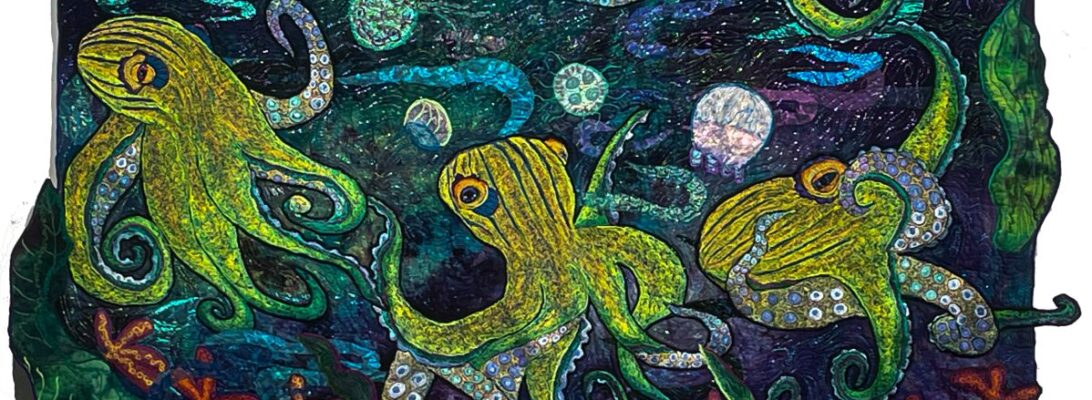
Some people spend a lot of time designing their art. They sketch. They plan. They build models. I’m so impressed. They can even tell you what it means.
I wish I could do that. I just can’t. It seems all of my art comes from random things, started but not finished, that I found later and made or put more random things on them. It sounds like a dreadfully chaotic way to make art. It is. It’s hellish for commissions. But it’s how I am. And if you want me to tell you what it’s about, you’ll need to wait several years until I get that straightened out. I am not in control of my art. All I can do is attend to it regularly, and do what it demands.
What is central to the process is the time stuff sticks around, on a photo wall before I commit to the next step. Is it right? Does it need to move three inches left? I’ve ruined many pieces by bulling through and finishing them without taking time to really look at them first.
I’m not helpless about this. And I’m not unskilled. It’s just the way it is. I suspect I’m not alone.
Art is a living thing, and a piece of art will tell you what it wants. And in the end, you didn’t so much make it as assist in it’s birth.

I laid out the background for this almost a year ago. Decided it needed white flowers on a pond edge. Didn’t know what else it needed. Lost it. Found it again. Lost it once more and then it resurfaced in the last cleaning. Somewhere in there I’d drawn a swimming frog in a batch of frogs. He didn’t get embroidered with the other batch, and I found him and thought, I really ought to finish him but I didn’t have a place to put him.

Then the piece of fabric surfaced. So I embroidered the frog, put in some water and rocks and a moon. Looked at it a while. HATED the moon. That almost never happens. But it just didn’t work.
When I was embroidering a batch of bugs and did three luna moths. One left over one just fluttered on to my quilt where the unfortunate moon was. White flowers and more water later it was done.

Did it take me two weeks? Or the two years to have the pieces fall together? Even I don’t know. I do know that fallow part of the process where you just stare at it, or lose it, or find it in a pile is an important part of the process, not to be missed or dissed.

I don’t know how to teach this kind of design. I can only show it in process. But I believe in it. I believe art grows like life, randomly, without sense, half by purpose but largely by accident, as it is. I can only stand back and watch.






















